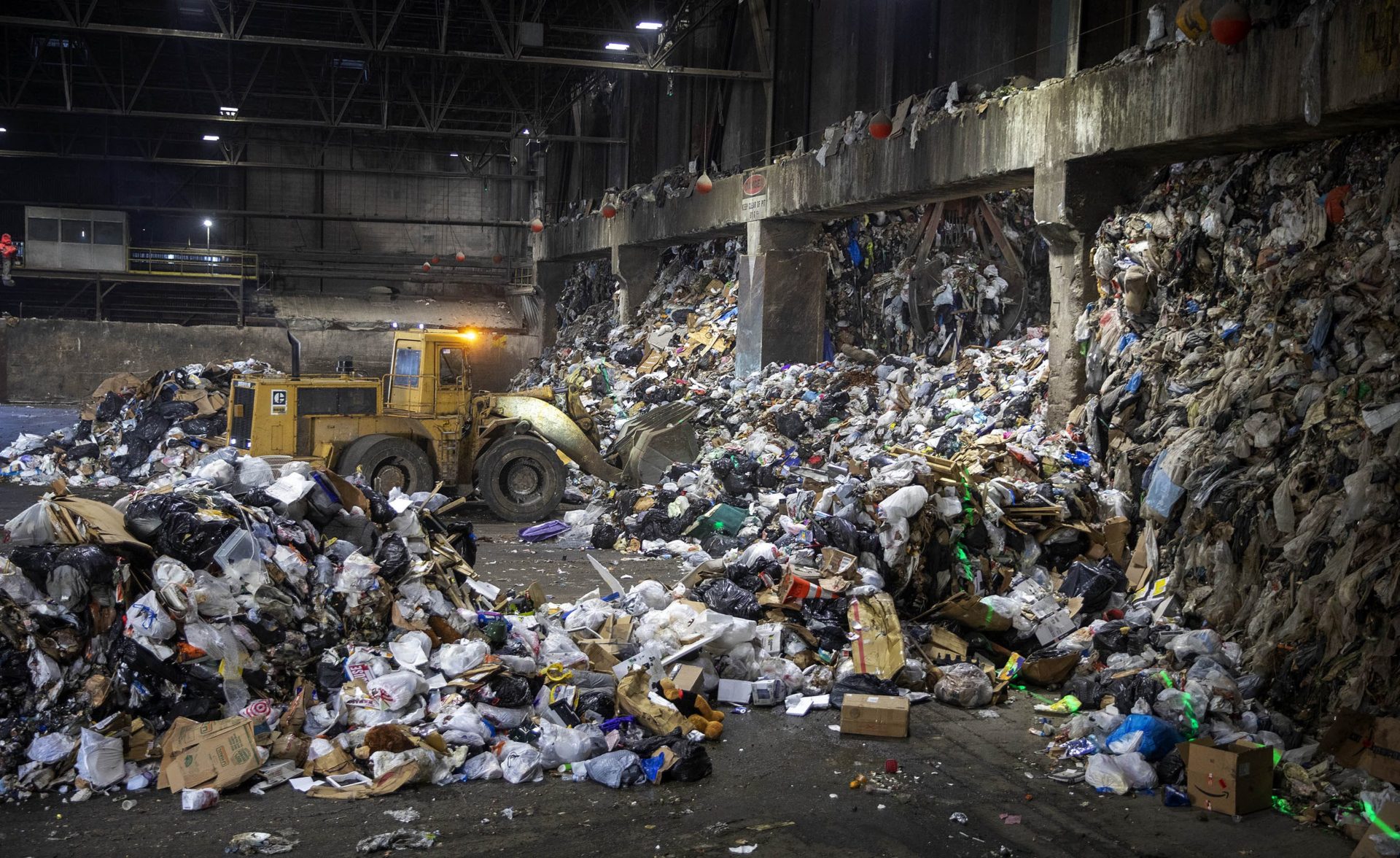Trash is a burning question with mixed answers in some Mass. towns

A front end loader pushes garbage into the bunker, so a grab crane can lift it from there into the furnace chute. (Robin Lubbock/WBUR)
Editor’s note: This is the first of two stories about the state of trash incinerators in Massachusetts.
The first thing you notice in the warehouse at the Haverhill incinerator is the giant mechanical claw.
It moves across the ceiling and drops into the second thing you notice: a pit of trash, 30 feet deep. The pit is an absolute sea of garbage, with plastic, cardboard and some items so degraded it’s impossible to tell what they once were.
On the upside, it doesn’t smell that bad.
“I mean, I get used to it,” said George Bakas, the incinerator’s operation manager, “but it’s good when other people come in who don’t smell it all the time and are like, ‘hmm, not too bad.’ “
The Haverhill incinerator is one of seven operating in Massachusetts. The state has a limited amount of landfill space, so most of our trash is either burned locally or shipped to landfills out of state.
State-level activists want that to stop; they argue incinerators are major sources of pollution and should be closed. But in communities hosting the incinerators, opinions are more mixed. For some, the incinerators are a source of tension, while for others, they’re not a concern.
Back in Haverhill, the claw came up from the pit with its prize: a huge mass of split open garbage bags. Each grab of the claw holds several tons of trash. According to Covanta, the company that owns the incinerator, the facility processes enough garbage each year to fill 276 miles worth of dump trucks.
Read the rest of this story and listen to the audio version at WBUR.org. Here is part 2 of the series.
For more NENC stories on trash and waste issues in New England, click here.
